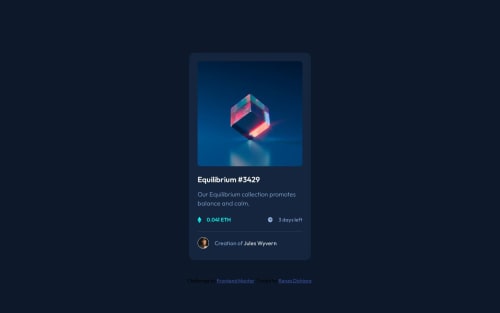Submitted about 2 years agoA solution to the NFT preview card component challenge
Card NFT responsive using Flexbox and the method Mobile-first
@rendichiara5

Solution retrospective
ENGLISH I would be very grateful for any kind of correction and any advice, I am new in the world of programming. I was able to make this design with guides that I was finding on the internet. I would appreciate your support, thank you.
SPANSIH Agradecería mucho cualquier tipo de correción y cualquier consejo, soy nuevo en el mundo de la programación. A éste diseño lo pude hacer con guías que iba encontrando en internet. Agradecería mucho tu apoyo, gracias.
Code
Loading...
Please log in to post a comment
Log in with GitHubCommunity feedback
No feedback yet. Be the first to give feedback on Renzo Dichiara's solution.
Join our Discord community
Join thousands of Frontend Mentor community members taking the challenges, sharing resources, helping each other, and chatting about all things front-end!
Join our Discord